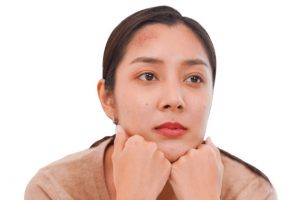What Plaque Psoriasis Looks Like And Treatment Schemes
Plaque psoriasis is a common skin condition that results in raised, red patches covered with silvery scales. It can affect any part of the body, causing discomfort and other complications.

What Is Plaque Psoriasis?
Plaque psoriasis is an autoimmune disease that causes the rapid growth of skin cells, leading to thickened patches of skin. These patches often appear on the scalp, elbows, knees, and lower back, but they can develop anywhere on the body. The exact cause is not fully understood, but it is linked to genetic factors and immune system dysfunction.
Plaque psoriasis is categorized as a chronic condition, meaning it requires ongoing management. It affects approximately 2-3% of the world’s population, with varying severity.
Symptoms and Visual Indicators
- Raised red patches: The most common sign of plaque psoriasis.
- Silvery scales: These are dead skin cells that accumulate on top of the red patches.
- Dry and cracked skin: The plaques often result in dry, flaky skin.
- Itching and discomfort: Many patients experience significant itching, soreness, and pain.
- Nail changes: Psoriasis can affect fingernails and toenails, causing pitting, discoloration, and even detachment of the nail.
Treatment Options
Treating plaque psoriasis involves addressing both the symptoms and underlying causes of the condition. Here are some of the primary options available:
- Topical Treatments: Creams and ointments applied directly to the skin, such as corticosteroids, vitamin D analogs, and salicylic acid.
- Phototherapy: Controlled exposure to ultraviolet light can help slow down the rapid skin cell growth.
- Systemic Medications: For more severe cases, medications that affect the entire body, such as methotrexate or biologics, may be prescribed.
- Lifestyle Modifications: Reducing stress, quitting smoking, and maintaining a healthy diet can also be beneficial in managing flare-ups.
Bullet List of Common Treatments
- Corticosteroids: Reduces inflammation and itching.
- Vitamin D Analogs: Slows skin cell growth.
- Salicylic Acid: Helps remove scales.
- Coal Tar: Reduces scaling, itching, and inflammation.
- Biologic Drugs: Targets specific parts of the immune system.
- Phototherapy: Uses UV light to treat patches.
Question and Answer Section
Q: What triggers plaque psoriasis?
A: Common triggers include stress, infections, injuries to the skin, smoking, and certain medications like lithium and beta-blockers.
Q: Can plaque psoriasis go away completely?
A: While plaque psoriasis is a chronic condition, it can go into remission with the right treatment plan. However, flare-ups can occur throughout life.
Q: Is plaque psoriasis contagious?
A: No, plaque psoriasis is not contagious and cannot be passed from person to person.
Q: How is plaque psoriasis diagnosed?
A: Dermatologists can usually diagnose plaque psoriasis based on a physical examination and medical history. In some cases, a skin biopsy may be necessary.
Professional Analysis: Treatment Effectiveness
| Treatment | Method | Average Time to See Results | Effectiveness (%) | Side Effects | Cost (USD per month) |
|---|---|---|---|---|---|
| Corticosteroids | Topical | 2-3 weeks | 60-70% | Thinning of the skin with long-term use | $30-$100 |
| Vitamin D Analogs | Topical | 1-2 months | 50-60% | Skin irritation | $50-$150 |
| Salicylic Acid | Topical | 4-6 weeks | 40-50% | Skin irritation, dryness | $20-$60 |
| Coal Tar | Topical | 2-3 months | 30-50% | Staining of skin and clothing | $20-$50 |
| Biologic Drugs | Systemic (injection) | 3-4 weeks | 70-90% | Increased risk of infections, expensive | $3,000-$10,000 |
| Phototherapy | UV light | 4-8 weeks | 60-75% | Sunburn-like symptoms, skin cancer risk | $100-$200 per session |
| Methotrexate | Oral | 3-6 months | 60-80% | Liver damage, lung issues with prolonged use | $25-$100 |
| Cyclosporine | Oral | 1-2 months | 70-80% | Kidney issues, high blood pressure | $100-$300 |
| Acitretin | Oral | 3-6 months | 50-60% | Dry skin, hair loss, liver damage | $100-$250 |
| Apremilast | Oral | 4-6 weeks | 40-50% | Diarrhea, nausea, headache | $400-$700 |
Summary
Plaque psoriasis can significantly impact the quality of life due to its physical symptoms and social stigma. Early diagnosis and a tailored treatment plan can help manage symptoms effectively. As ongoing research develops new treatment options, patients have more choices in how they approach managing this chronic condition.
References







Recent Comments